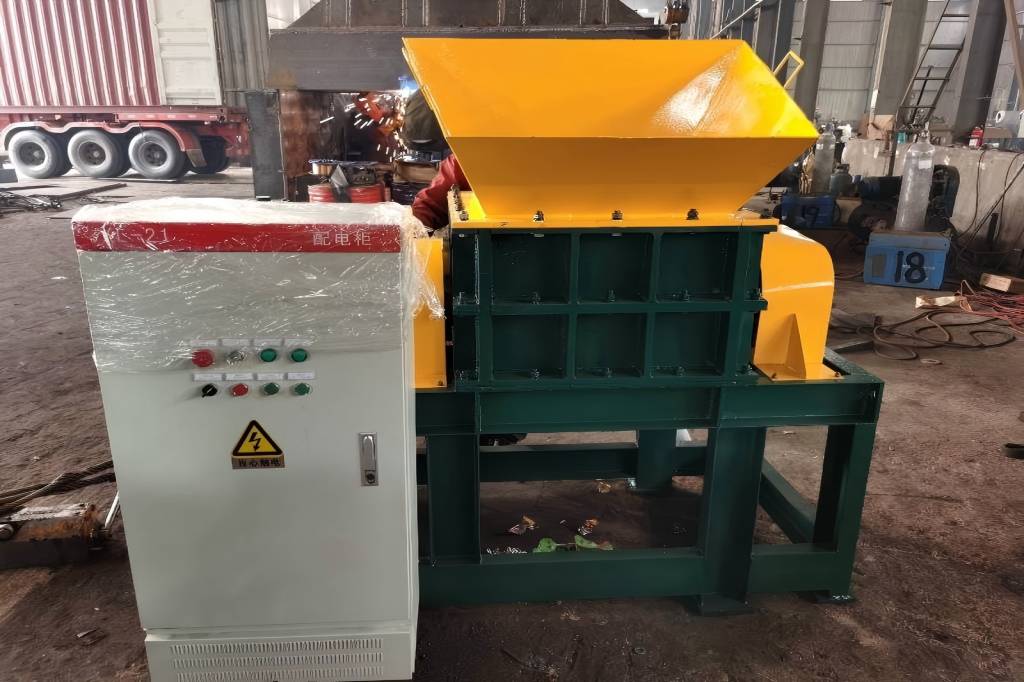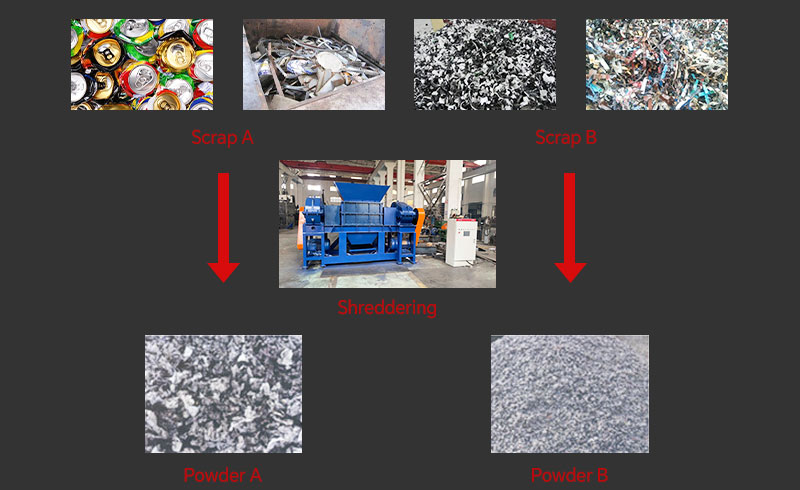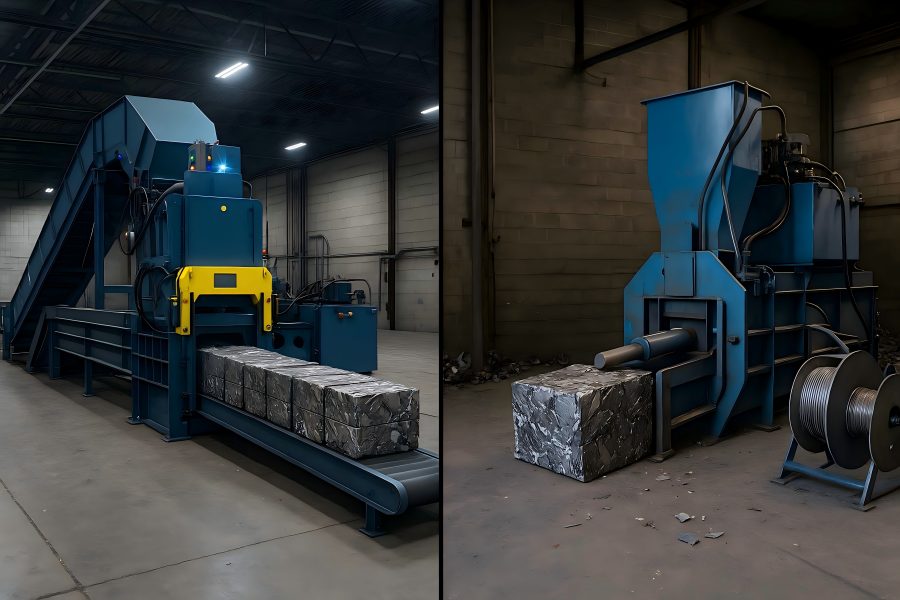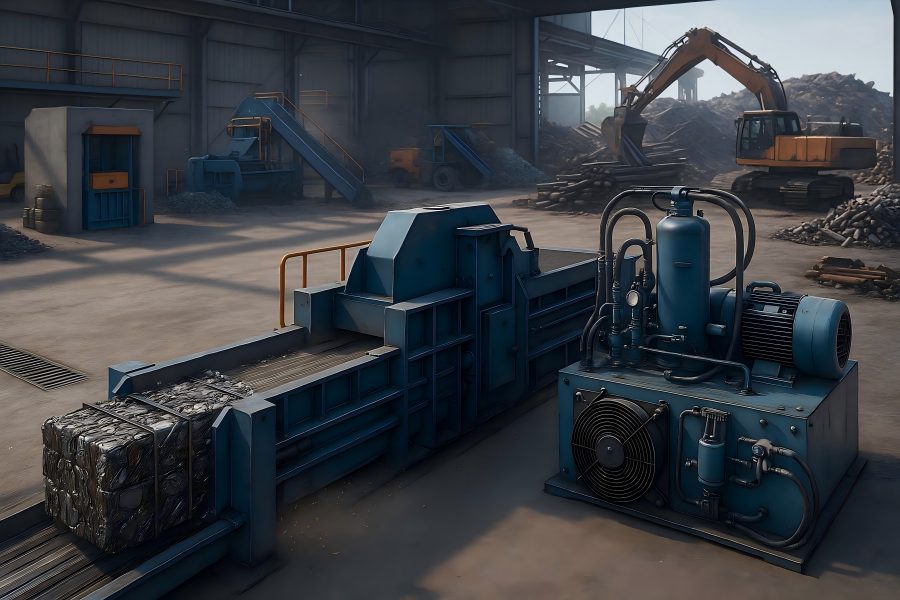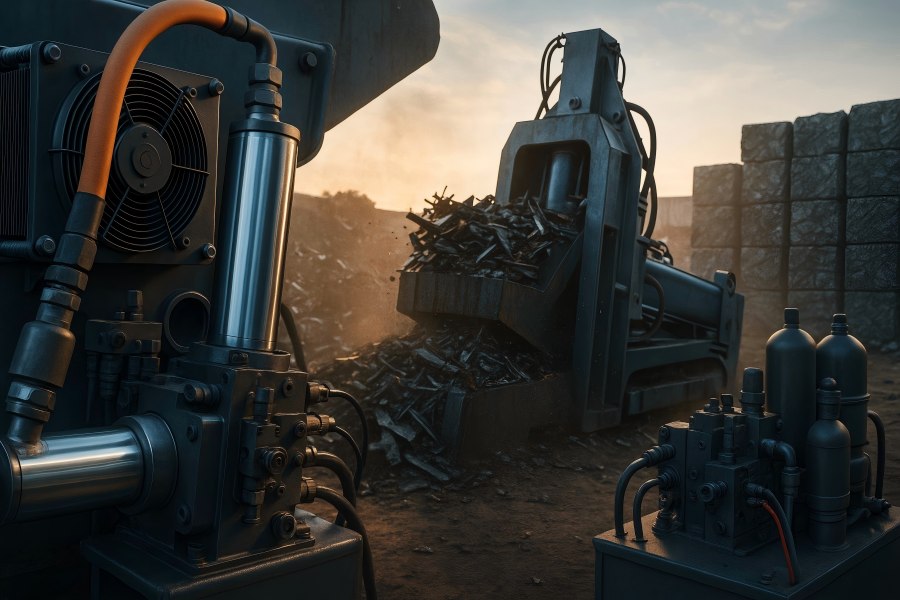In the evolving landscape of metal recycling and waste management, selecting the right shredder machine isn’t just a matter of budget—it can fundamentally affect your workflow, material throughput, and long-term profitability.
Whether you operate a modest scrap yard or a high-volume processing facility, choosing between compact and industrial metal shredder machines comes down to one core question: Which option truly suits your operation?
Understanding the Role of Metal Shredder Machines
Metal shredder machines are specialized equipment designed to reduce large pieces of metal into smaller, manageable fragments. These fragments can then be easily sorted, melted, or reused in various manufacturing and recycling processes. These devices are essential to converting scrap into valuable materials, whether they be ferrous or non-ferrous metals, such as copper, steel, aluminum, and alloys.
Broadly speaking, metal shredders fall into two categories:
- Compact Metal Shredders: Smaller, mobile or semi-fixed machines typically used in low to medium-capacity operations.
- Industrial Metal Shredders: Large-scale, high-capacity machines built for continuous, heavy-duty processing.
Comparing Compact vs. Industrial Shredders
| Feature | Compact Shredders | Industrial Shredders |
| Throughput | Up to 2 tons/hour | 10+ tons/hour |
| Typical Use | Small scrap yards, workshops | Large-scale recycling plants |
| Power Requirement | <50 kW | 100–500+ kW |
| Installation | Plug-and-play or mobile | Permanent installation required |
| Material Types | Soft metals, cans, wires | Car bodies, structural steel |
| Footprint | Compact, portable | Large, fixed layout |
| Cost | Lower upfront & maintenance costs | Higher upfront, long-term ROI |
Compact Metal Shredder Machines
Compact metal shredders are typically designed for entry-level users, small businesses, or operations with space and budget limitations. These machines are portable or require minimal installation, making them ideal for urban facilities, mobile scrap dealers, or localized recycling centers.
Key Features:
- Size & Portability: Small footprint; often available in mobile or skid-mounted designs.
- Power & Capacity: Lower power input (typically under 50 kW) and designed for limited throughput (under 2 tons/hour).
- Material Range: Can handle thin-gauge metals, light aluminum, soft steel, and small appliances.
- Usability: Usually plug-and-play, with easy-to-understand controls and little training needed.
| Pros | Cons |
| Lower initial investment | Limited throughput capacity |
| Easy to transport and install | Not suitable for heavy-duty materials |
| User-friendly operation | Shorter operational lifespan under heavy load |
| Ideal for space-constrained environments | Higher maintenance frequency if used intensively |
| Quick setup and low infrastructure requirements | Lower energy efficiency compared to industrial-grade machines |
Industrial Metal Shredder Machine
Industrial shredder machines are engineered for maximum capacity, durability, and performance. These machines are at the heart of large-scale recycling facilities and scrap processing centers where volumes exceed 10 tons/hour or more.
Key Features:
- Size & Configuration: Large, stationary systems often require dedicated housing or installation.
- Power & Output: High-powered motors (100 kW to over 500 kW) for shredding thick, heavy metals, car bodies, and steel beams.
- Automation: PLC-based controls, sensors, conveyor feeds, and real-time monitoring are examples of advanced automation choices.
- Durability: Hardened alloy blades, wear-resistant liners, and robust frames designed for 24/7 operation.
| Pros | Cons |
| High-capacity throughput for demanding applications | High capital and operating costs |
| Long operational lifespan with proper maintenance | Requires significant space and installation planning |
| Efficient processing of thick and heavy scrap materials | Needs trained staff for operation and maintenance |
| Advanced automation options improve productivity | May require longer lead times for installation and commissioning |
| Suitable for integration with large recycling lines | Not viable for small or mobile operations |
Application Scenarios: Which One Works for You?
Small Scrap Dealer or Workshop
If your operation handles limited volumes of light scrap (e.g., aluminum cans, sheet metal, or copper wires), a compact shredder can offer the ideal solution. These machines reduce handling costs, help with space-saving, and allow for better material resale.
Medium-Sized Fabrication Facility
In cases where periodic shredding of excess metal is required (e.g., off-cuts, end-of-life tools), a higher-end compact shredder or a hybrid model might strike the right balance between performance and cost.
Urban Recycling Centers
With zoning and space constraints, compact shredders shine in dense urban environments. They offer adequate capacity while conforming to noise, dust, and size restrictions.
Large Recycling Plants
If your operation handles vehicles, industrial scrap, or structural materials, an industrial shredder is the only viable choice. These machines can integrate with sorting lines, conveyor systems, and even AI-based material identification for automation and speed.
Mobile Metal Recovery Units
Some compact shredders are mounted on trailers or truck beds, perfect for remote jobs, demolition sites, or contract-based recycling services.
Investment Considerations
Before making a purchase, consider:
- Volume of Material: Do you expect daily, weekly, or seasonal loads?
- Metal Types: Softer metals can be processed by compact units, while hard or mixed metals need industrial-grade equipment.
- Space & Infrastructure: Can your site accommodate a large, fixed system? Or do you need flexibility?
- Budget & ROI Expectations: Compact units cost less upfront, but may wear out faster. Industrial machines cost more but last decades.
- Labor Requirements: Simpler machines need less training; industrial systems may need full-time operators and maintenance staff.
Maintenance and Lifespan
Despite being simple to maintain, compact machines frequently have a shorter lifespan and may need to have their blades replaced more frequently. Industrial machines, when properly maintained, can operate efficiently for over 15–20 years, with robust service plans and OEM support.
Maintenance tasks include:
- Blade inspection and sharpening/replacement
- Gearbox lubrication
- Safety system calibration
- Monitoring hydraulic systems (if applicable)
Trends and Innovations
The metal shredding industry is undergoing rapid transformation driven by:
- Automation: Touchscreen interfaces, remote diagnostics, and real-time data monitoring.
- AI Integration: Object recognition for separating valuable materials automatically.
- Energy Efficiency: Variable frequency drives (VFDs), low-noise motors, and regenerative braking.
- Sustainability: Emphasis on closed-loop recycling systems that reduce landfill dependency.
Compact shredders are benefiting from noise-reduction and energy-saving technologies, while industrial machines are integrating full automation for 24/7 operations.
Case Study Snapshot
Case A – Compact Shredder Success:
A medium-sized electronics recycling company in Singapore adopted a compact dual-shaft shredder to process aluminum casings and circuit boards. The machine reduced labor needs by 35% and boosted scrap purity, improving resale value.
Case B – Industrial Shredder Transformation:
A U.S. Midwest automotive recycler invested in a 400 kW industrial shredder system capable of handling whole car bodies. The facility now processes 200 tons/day and reports a 4-year ROI due to improved metal recovery rates and labor efficiencies.
Final Thoughts
When it comes to metal shredding, there’s no one-size-fits-all solution. Compact shredders deliver agility, affordability, and simplicity, making them perfect for lighter operations. Industrial shredders offer brute force, automation, and scalability, ideal for businesses with demanding workloads and growth ambitions.
Choosing between compact and industrial metal shredder machines ultimately hinges on the nature of your operations, future scalability goals, and the balance between cost-efficiency and performance.

